Abstract
The first adult case of 11 beta-hydroxysteroid dehydrogenase (11 beta-OHSD) deficiency is described. The impaired conversion of cortisol to cortisone (indicated by urinary cortisol and cortisone metabolites and failure to metabolize 11 alpha-[3H]cortisol to [3H]H2O), was associated with hypertension, hypokalemia, and suppression of the renin-angiotensin-aldosterone system. When established on a fixed Na+/K+ intake, dexamethasone, given orally, produced a natriuresis and potassium retention. Plasma renin activity became detectable. When hydrocortisone (10 mg daily s.c. for 4 d) was added, there was marked Na+ retention, a kaliuresis (urinary Na+/K+ falling from 1.2 to 0.15), with suppression of plasma renin activity and an increase in blood pressure. These changes were also seen with the subject on no treatment. Conversion of cortisone to cortisol was not affected. These results suggest that cortisol acts as a potent mineralocorticoid in 11 beta-OHSD deficiency. The major site for the oxidation of cortisol to cortisone is the kidney. In this patient congenital deficiency of 11 beta-OHSD results in high intrarenal cortisol levels which then act on renal type I mineralocorticoid receptors. This condition can be treated with dexamethasone, which suppresses cortisol secretion and binds to the type II glucocorticoid receptor. We suggest that 11 beta-OHSD exerts a critical paracrine role in determining the specificity of the type I receptor. In the normal state cortisol is converted by 11 beta-OHSD to cortisone which thus allows aldosterone to bind preferentially to the type I receptors in the kidney and gut. In this patient deficiency of 11 beta-OHSD results in high intrarenal cortisol concentrations that then bind to the type I receptor.
Full text
PDF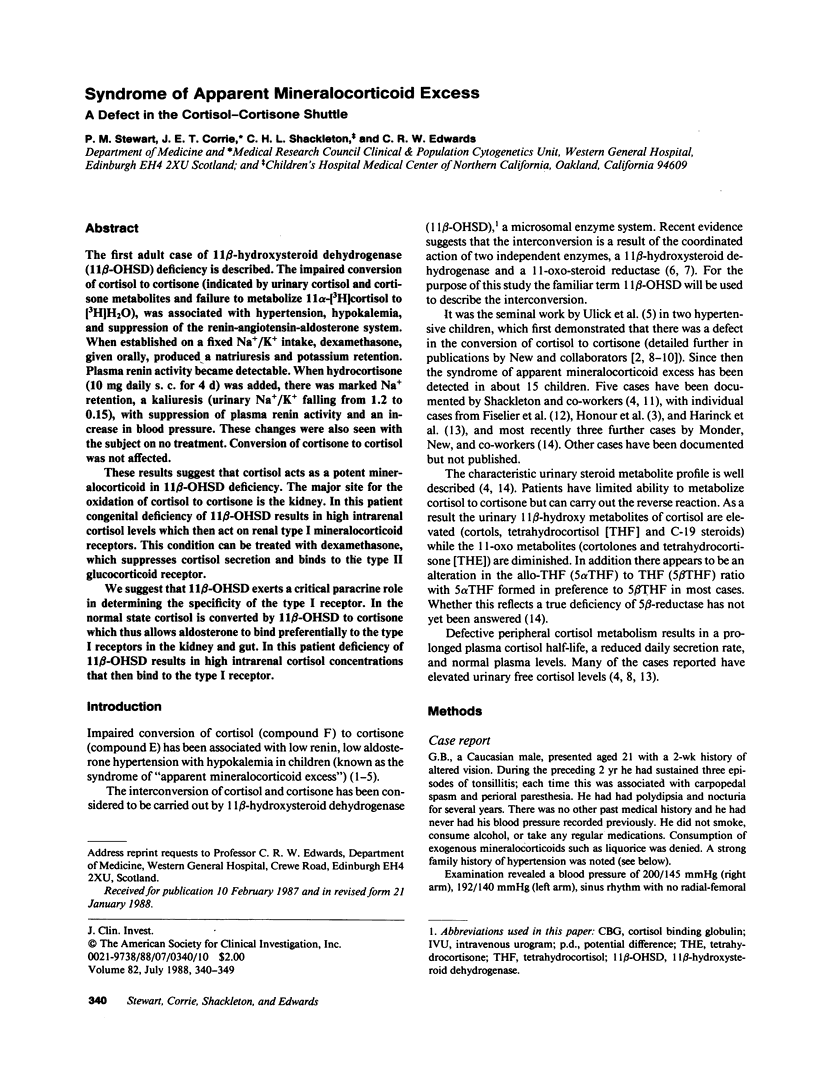
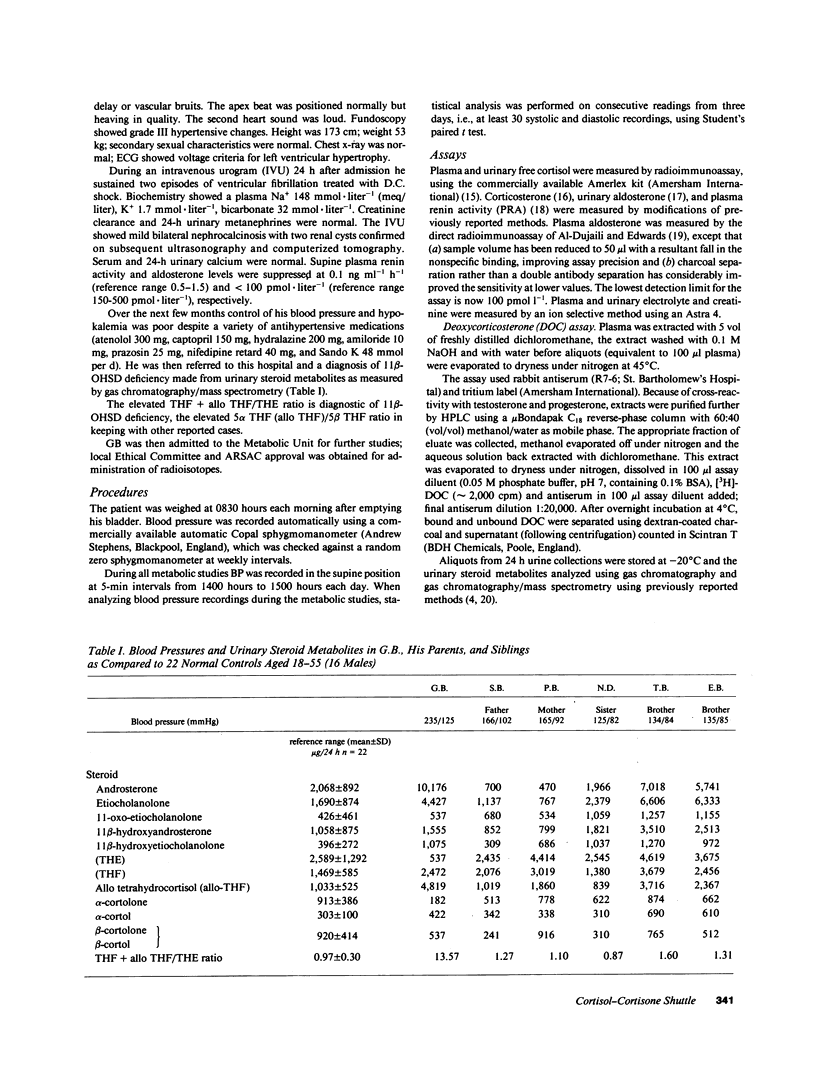
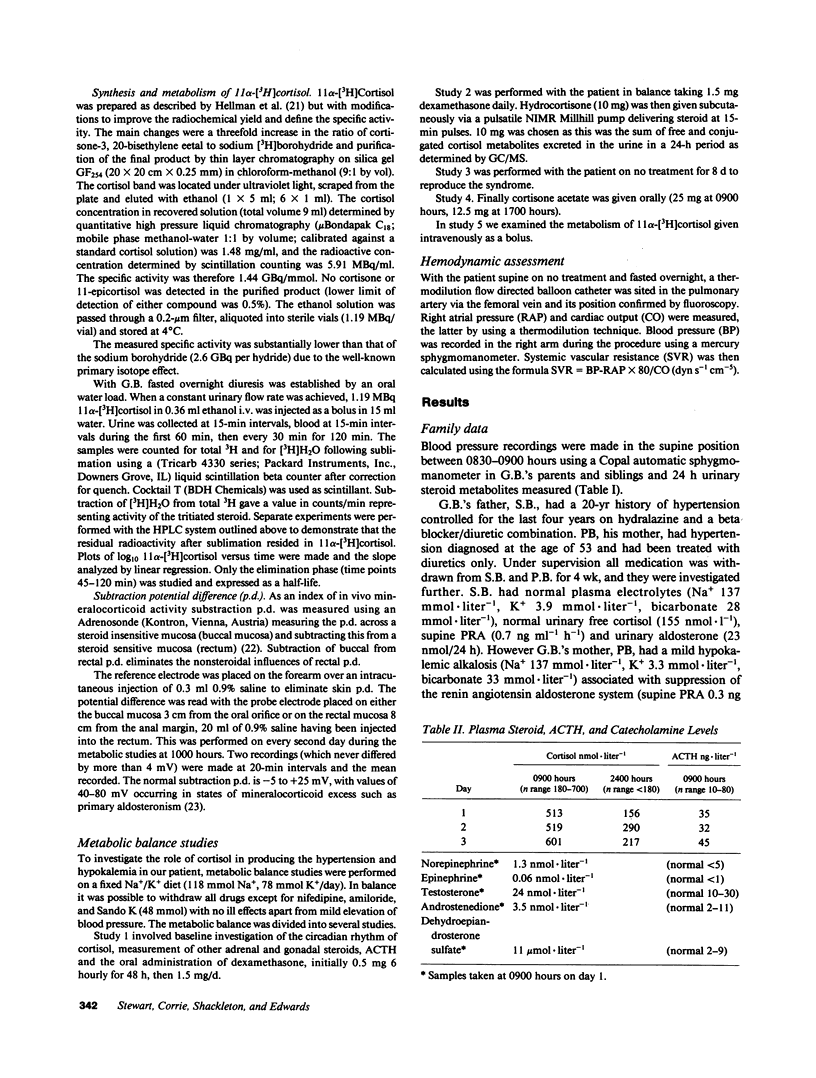
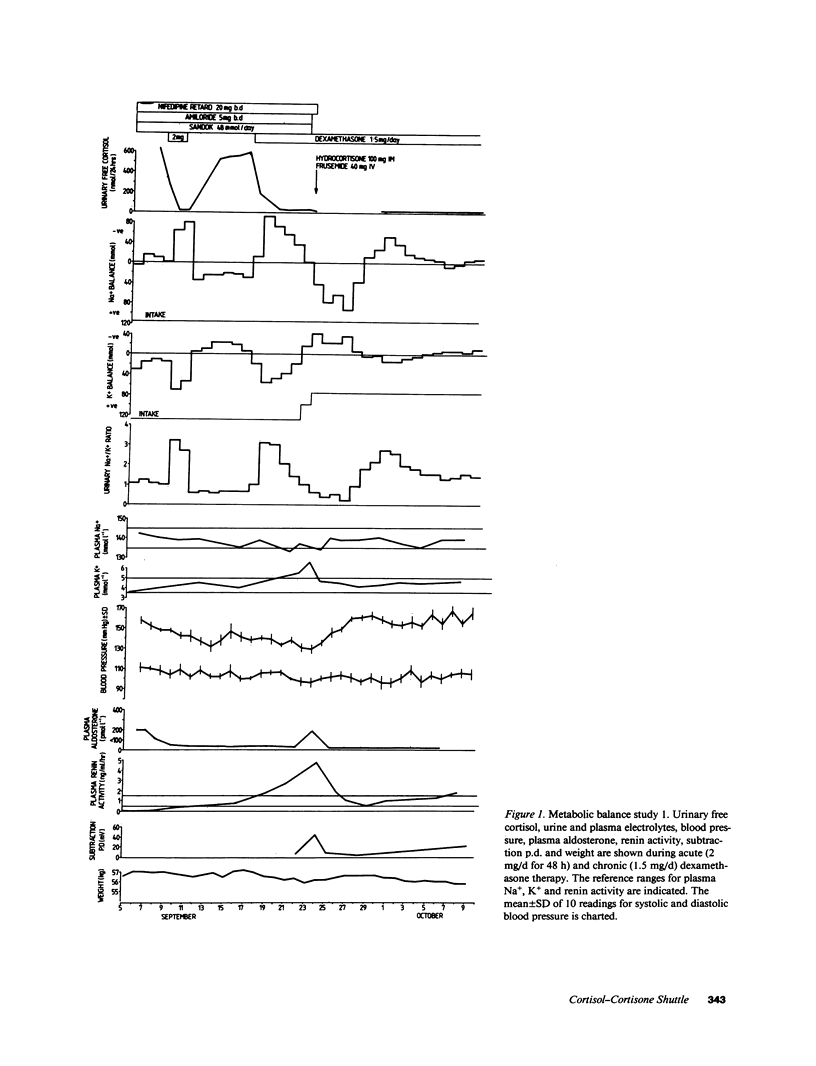
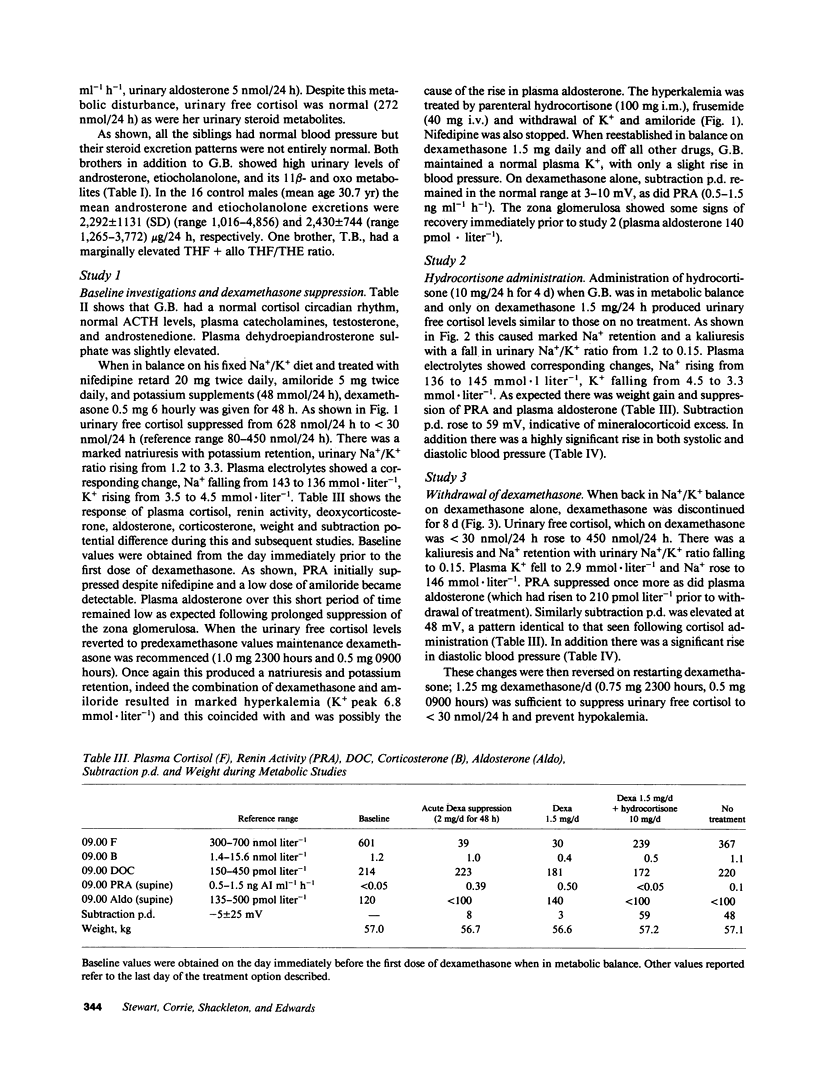
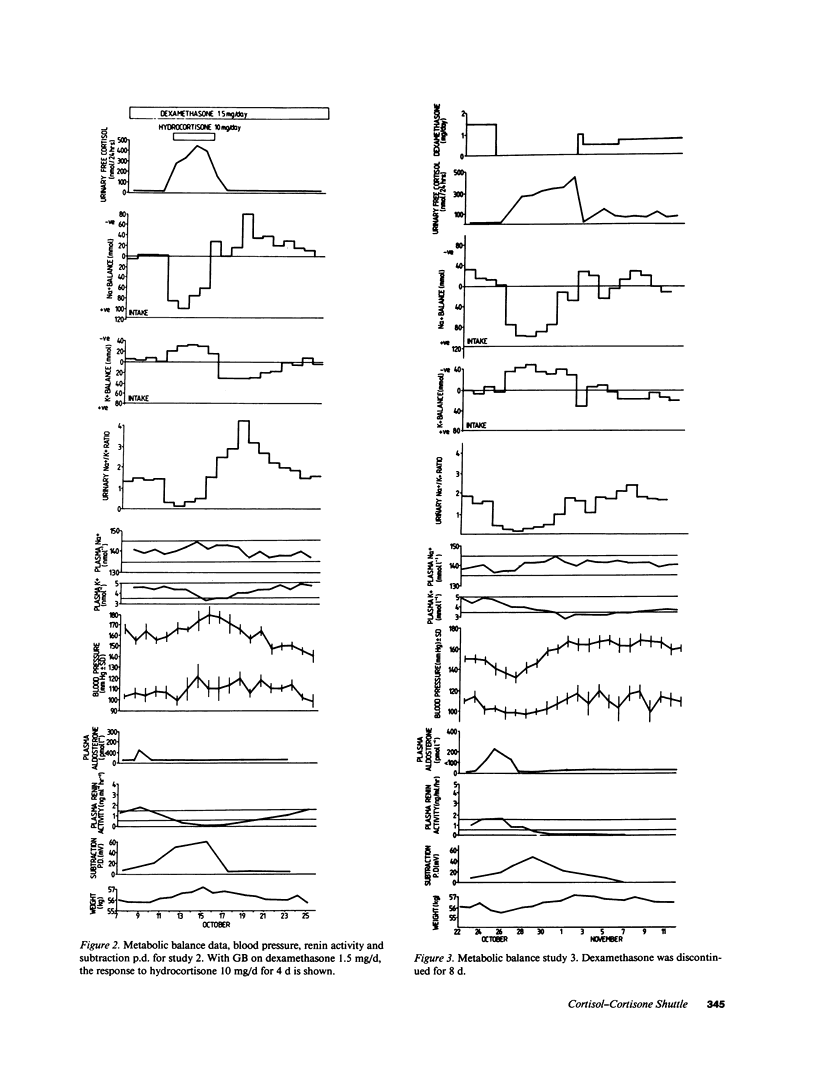
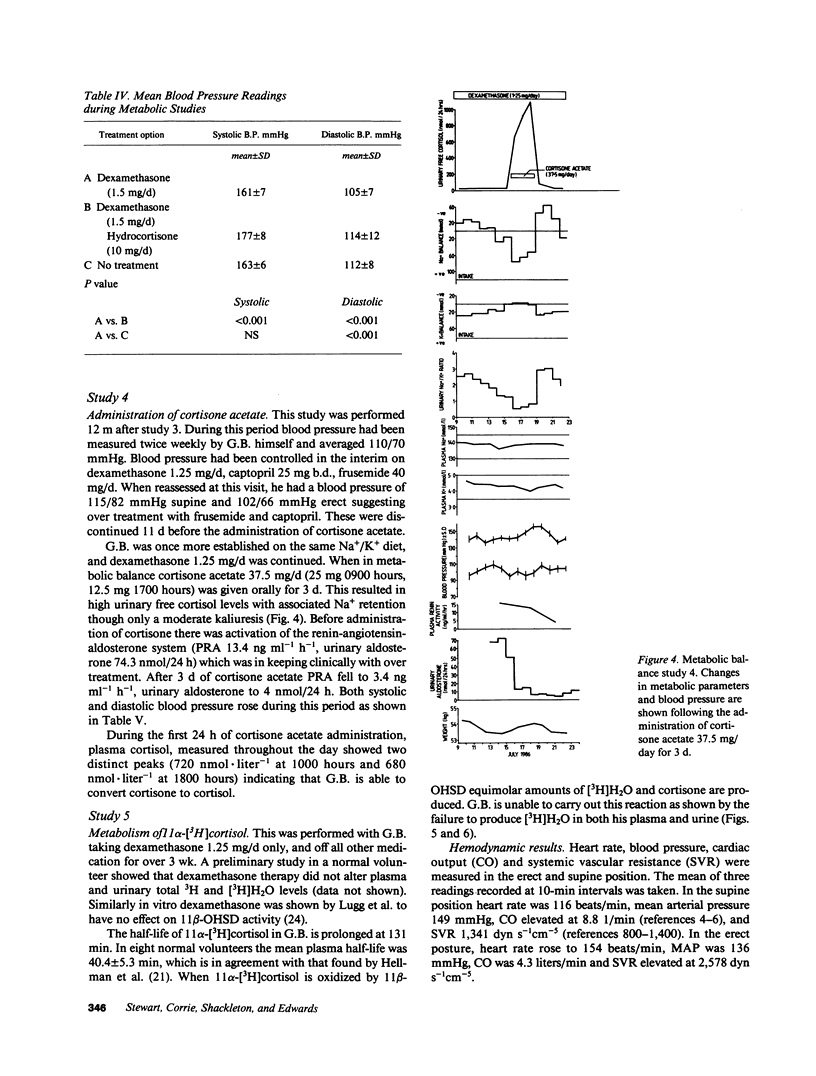
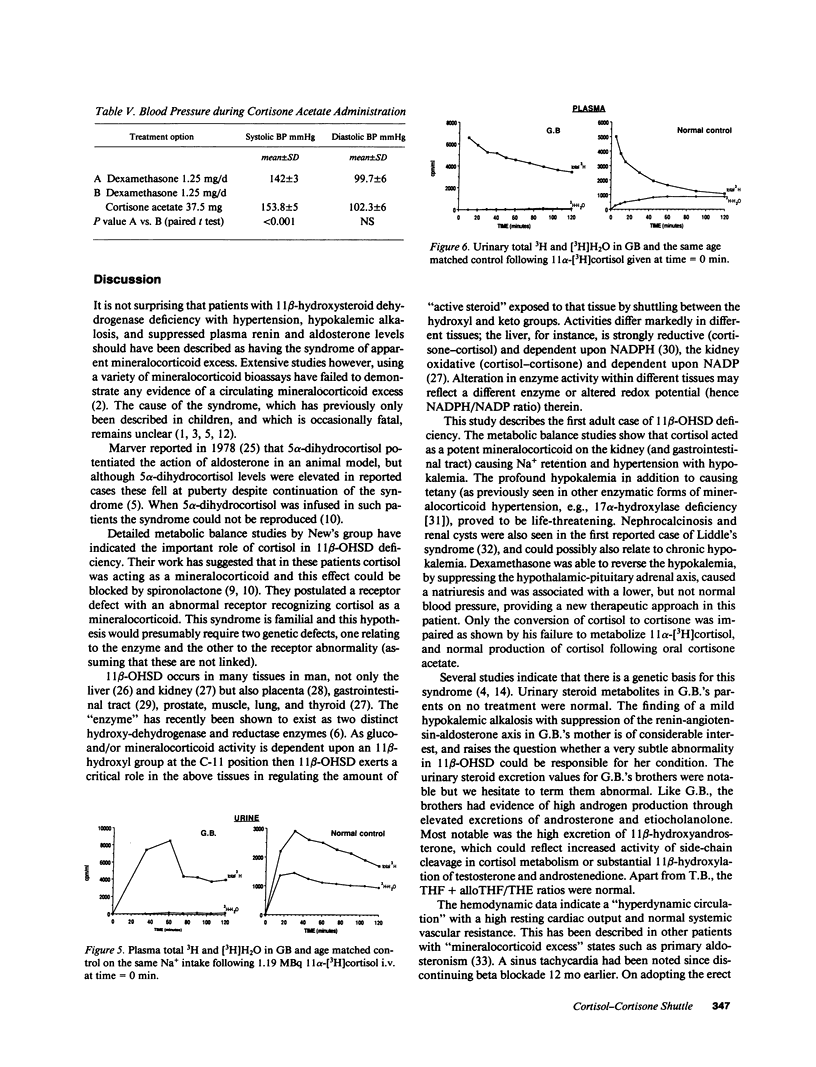
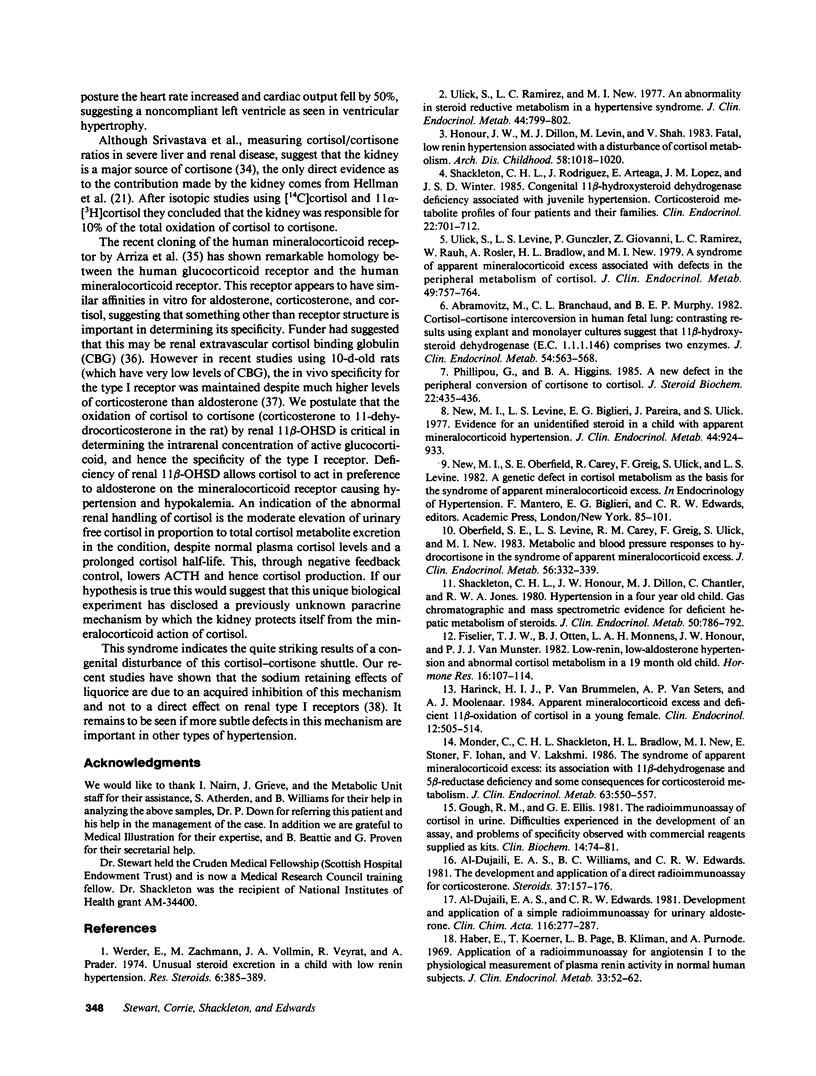
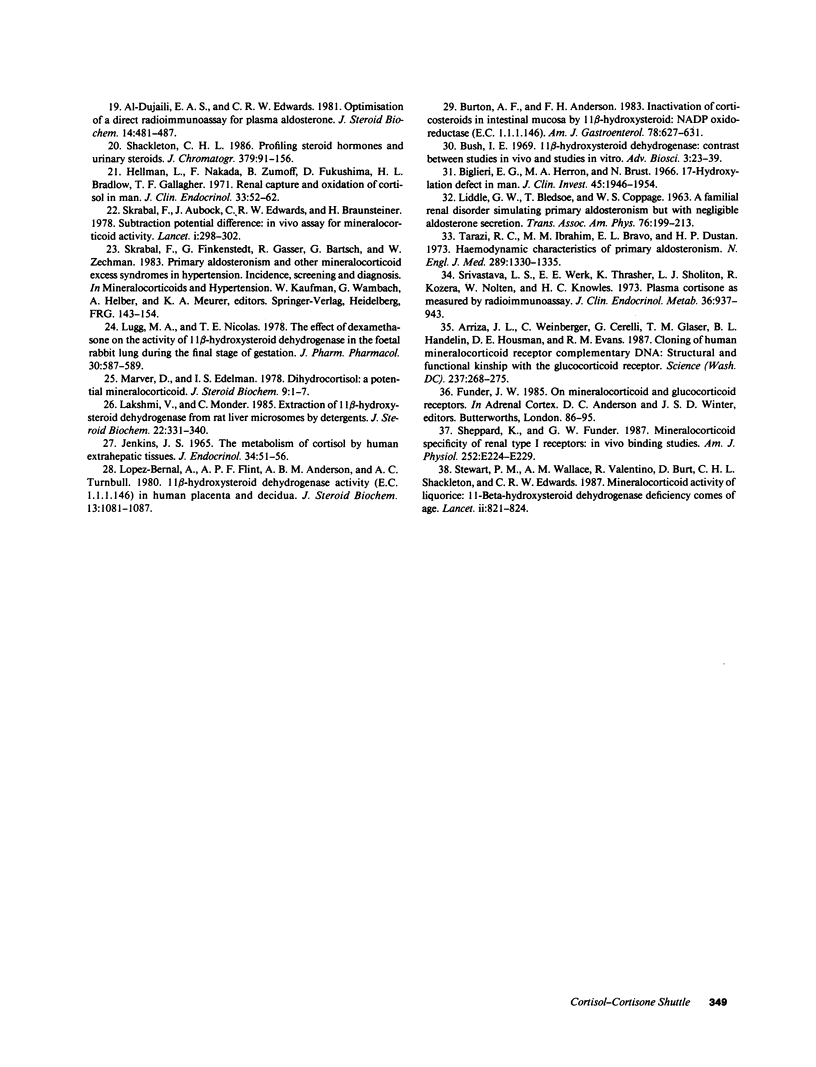
Selected References
These references are in PubMed. This may not be the complete list of references from this article.
- Abramovitz M., Branchaud C. L., Murphy B. E. Cortisol-cortisone interconversion in human fetal lung: contrasting results using explant and monolayer cultures suggest that 11 beta-hydroxysteroid dehydrogenase (EC 1.1.1.146) comprises two enzymes. J Clin Endocrinol Metab. 1982 Mar;54(3):563–568. doi: 10.1210/jcem-54-3-563. [DOI] [PubMed] [Google Scholar]
- Al-Dujaili E. A., Edwards C. R. Development and application of a simple radioimmunoassay for urinary aldosterone. Clin Chim Acta. 1981 Nov 11;116(3):277–287. doi: 10.1016/0009-8981(81)90047-4. [DOI] [PubMed] [Google Scholar]
- Al-Dujaili E. A., Edwards C. R. Optimization of a direct radioimmunoassay for plasma aldosterone. J Steroid Biochem. 1981 May;14(5):481–487. doi: 10.1016/0022-4731(81)90360-5. [DOI] [PubMed] [Google Scholar]
- Al-Dujaili E. A., Williams B. C., Edwards C. R. The development and application of a direct radioimmunoassay for corticosterone. Steroids. 1981 Feb;37(2):157–176. doi: 10.1016/s0039-128x(81)80015-3. [DOI] [PubMed] [Google Scholar]
- Arriza J. L., Weinberger C., Cerelli G., Glaser T. M., Handelin B. L., Housman D. E., Evans R. M. Cloning of human mineralocorticoid receptor complementary DNA: structural and functional kinship with the glucocorticoid receptor. Science. 1987 Jul 17;237(4812):268–275. doi: 10.1126/science.3037703. [DOI] [PubMed] [Google Scholar]
- Bernal A. L., Flint A. P., Anderson A. B., Turnbull A. C. 11 beta-Hydroxyteroid dehydrogenase activity (E.C. 1.1.1.146) in human placenta and decidua. J Steroid Biochem. 1980 Sep;13(9):1081–1087. doi: 10.1016/0022-4731(80)90140-5. [DOI] [PubMed] [Google Scholar]
- Biglieri E. G., Herron M. A., Brust N. 17-hydroxylation deficiency in man. J Clin Invest. 1966 Dec;45(12):1946–1954. doi: 10.1172/JCI105499. [DOI] [PMC free article] [PubMed] [Google Scholar]
- Burton A. F., Anderson F. H. Inactivation of corticosteroids in intestinal mucosa by 11 beta-hydroxysteroid: NADP oxidoreductase (EC 1.1.1.146). Am J Gastroenterol. 1983 Oct;78(10):627–631. [PubMed] [Google Scholar]
- Fiselier T. J., Otten B. J., Monnens L. A., Honour J. W., van Munster P. J. Low-renin, low-aldosterone hypertension and abnormal cortisol metabolism in a 19-month-old child. Horm Res. 1982;16(2):107–114. doi: 10.1159/000179490. [DOI] [PubMed] [Google Scholar]
- Gough R. M., Ellis G. The radioimmunoassay of cortisol in urine. Difficulties experienced in the development of an assay, and problems of specificity observed with commercial reagents supplied as kits. Clin Biochem. 1981 Apr;14(2):74–81. doi: 10.1016/s0009-9120(81)90738-4. [DOI] [PubMed] [Google Scholar]
- Harinck H. I., van Brummelen P., Van Seters A. P., Moolenaar A. J. Apparent mineralocorticoid excess and deficient 11 beta-oxidation of cortisol in a young female. Clin Endocrinol (Oxf) 1984 Nov;21(5):505–514. doi: 10.1111/j.1365-2265.1984.tb01388.x. [DOI] [PubMed] [Google Scholar]
- Hellman L., Nakada F., Zumoff B., Fukushima D., Bradlow H. L., Gallagher T. F. Renal capture and oxidation of cortisol in man. J Clin Endocrinol Metab. 1971 Jul;33(1):52–62. doi: 10.1210/jcem-33-1-52. [DOI] [PubMed] [Google Scholar]
- Honour J. W., Dillon M. J., Levin M., Shah V. Fatal, low renin hypertension associated with a disturbance of cortisol metabolism. Arch Dis Child. 1983 Dec;58(12):1018–1020. doi: 10.1136/adc.58.12.1018. [DOI] [PMC free article] [PubMed] [Google Scholar]
- Jenkins J. S. The metabolism of cortisol by human extra-hepatic tissues. J Endocrinol. 1966 Jan;34(1):51–56. doi: 10.1677/joe.0.0340051. [DOI] [PubMed] [Google Scholar]
- Lakshmi V., Monder C. Extraction of 11 beta-hydroxysteroid dehydrogenase from rat liver microsomes by detergents. J Steroid Biochem. 1985 Mar;22(3):331–340. doi: 10.1016/0022-4731(85)90435-2. [DOI] [PubMed] [Google Scholar]
- Lugg M. A., Nicholas T. E. The effect of dexamethasone on the activity of 11beta-hydroxysteroid dehydrogenase in the foetal rabbit lung during the final stage of gestation. J Pharm Pharmacol. 1978 Sep;30(9):587–589. doi: 10.1111/j.2042-7158.1978.tb13332.x. [DOI] [PubMed] [Google Scholar]
- Marver D., Edelman I. S. Dihydrocortisol: a potential mineralocorticoid. J Steroid Biochem. 1978 Jan;9(1):1–7. doi: 10.1016/0022-4731(78)90093-6. [DOI] [PubMed] [Google Scholar]
- Monder C., Shackleton C. H., Bradlow H. L., New M. I., Stoner E., Iohan F., Lakshmi V. The syndrome of apparent mineralocorticoid excess: its association with 11 beta-dehydrogenase and 5 beta-reductase deficiency and some consequences for corticosteroid metabolism. J Clin Endocrinol Metab. 1986 Sep;63(3):550–557. doi: 10.1210/jcem-63-3-550. [DOI] [PubMed] [Google Scholar]
- New M. I., Levine L. S., Biglieri E. G., Pareira J., Ulick S. Evidence for an unidentified steroid in a child with apparent mineralocorticoid hypertension. J Clin Endocrinol Metab. 1977 May;44(5):924–933. doi: 10.1210/jcem-44-5-924. [DOI] [PubMed] [Google Scholar]
- Oberfield S. E., Levine L. S., Carey R. M., Greig F., Ulick S., New M. I. Metabolic and blood pressure responses to hydrocortisone in the syndrome of apparent mineralocorticoid excess. J Clin Endocrinol Metab. 1983 Feb;56(2):332–339. doi: 10.1210/jcem-56-2-332. [DOI] [PubMed] [Google Scholar]
- Phillipou G., Higgins B. A. A new defect in the peripheral conversion of cortisone to cortisol. J Steroid Biochem. 1985 Mar;22(3):435–436. doi: 10.1016/0022-4731(85)90451-0. [DOI] [PubMed] [Google Scholar]
- Shackleton C. H., Honour J. W., Dillon M. J., Chantler C., Jones R. W. Hypertension in a four-year-old child: gas chromatographic and mass spectrometric evidence for deficient hepatic metabolism of steroids. J Clin Endocrinol Metab. 1980 Apr;50(4):786–702. doi: 10.1210/jcem-50-4-786. [DOI] [PubMed] [Google Scholar]
- Shackleton C. H. Profiling steroid hormones and urinary steroids. J Chromatogr. 1986 Jun 20;379:91–156. doi: 10.1016/s0378-4347(00)80683-0. [DOI] [PubMed] [Google Scholar]
- Shackleton C. H., Rodriguez J., Arteaga E., Lopez J. M., Winter J. S. Congenital 11 beta-hydroxysteroid dehydrogenase deficiency associated with juvenile hypertension: corticosteroid metabolite profiles of four patients and their families. Clin Endocrinol (Oxf) 1985 Jun;22(6):701–712. doi: 10.1111/j.1365-2265.1985.tb00160.x. [DOI] [PubMed] [Google Scholar]
- Sheppard K., Funder J. W. Mineralocorticoid specificity of renal type I receptors: in vivo binding studies. Am J Physiol. 1987 Feb;252(2 Pt 1):E224–E229. doi: 10.1152/ajpendo.1987.252.2.E224. [DOI] [PubMed] [Google Scholar]
- Skrabal F., Auböck J., Edwards C. R., Braunsteiner H. Subtraction potential difference: In-vivo assay for mineralocorticoid activity. Lancet. 1978 Feb 11;1(8059):298–302. doi: 10.1016/s0140-6736(78)90070-3. [DOI] [PubMed] [Google Scholar]
- Srivastava L. S., Werk E. E., Jr, Thrasher K., Sholiton L. J., Kozera R., Nolten W., Knowles H. C., Jr Plasma cortisone concentration as measured by radioimmunoassay. J Clin Endocrinol Metab. 1973 May;36(5):937–943. doi: 10.1210/jcem-36-5-937. [DOI] [PubMed] [Google Scholar]
- Stewart P. M., Wallace A. M., Valentino R., Burt D., Shackleton C. H., Edwards C. R. Mineralocorticoid activity of liquorice: 11-beta-hydroxysteroid dehydrogenase deficiency comes of age. Lancet. 1987 Oct 10;2(8563):821–824. doi: 10.1016/s0140-6736(87)91014-2. [DOI] [PubMed] [Google Scholar]
- Tarazi R. C., Ibrahim M. M., Bravo E. L., Dustan H. P. Hemodynamic characteristics of primary aldosteronism. N Engl J Med. 1973 Dec 20;289(25):1330–1335. doi: 10.1056/NEJM197312202892502. [DOI] [PubMed] [Google Scholar]
- Ulick S., Levine L. S., Gunczler P., Zanconato G., Ramirez L. C., Rauh W., Rösler A., Bradlow H. L., New M. I. A syndrome of apparent mineralocorticoid excess associated with defects in the peripheral metabolism of cortisol. J Clin Endocrinol Metab. 1979 Nov;49(5):757–764. doi: 10.1210/jcem-49-5-757. [DOI] [PubMed] [Google Scholar]
- Ulick S., Ramirez L. C., New M. I. An abnormality in steroid reductive metabolism in a hypertensive syndrome. J Clin Endocrinol Metab. 1977 Apr;44(4):799–802. doi: 10.1210/jcem-44-4-799. [DOI] [PubMed] [Google Scholar]


